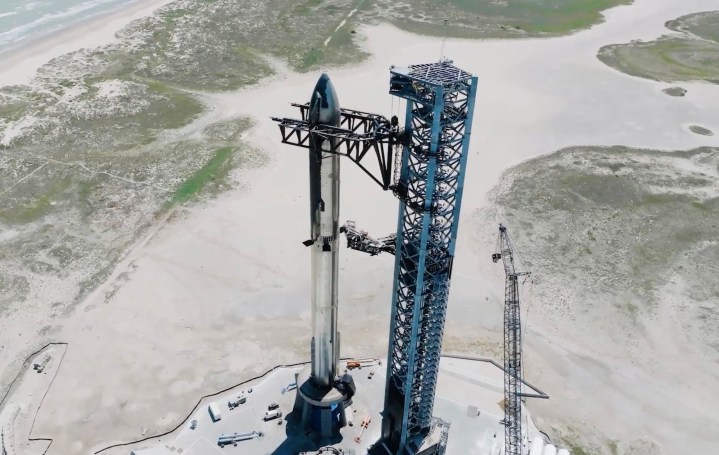
SpaceX is targeting next week for the third test flight of Starship, the world’s most powerful rocket.
The Elon Musk-led company said the Starship, which comprises the first-stage Super Heavy booster and the upper-stage Starship spacecraft, could launch “as soon as March 14,” though this depends on the Federal Aviation Administration handing it a launch permit in the coming days.
SpaceX revealed the date in a social media post on Wednesday and added a dedicated page for the mission to the “Launches” section of its website.
The spaceflight company said a live stream of what promises to be a spectacular test flight will begin on its website and on X (formerly Twitter) about 30 minutes before launch.
The Starship stands at 120 meters (395 feet) and packs a colossal 17 million pounds of thrust at launch — almost double that of NASA’s most powerful rocket, the new Space Launch System — and has flown two times to date, with both missions launching from SpaceX’s Starbase facility in Boca Chica, Texas. The next flight will also lift off from there.
On its first two missions, the Starship exploded before reaching orbit, though the second test flight achieved stage separation for the first time.
“Starship’s second flight test achieved a number of major milestones and provided invaluable data to continue rapidly developing Starship,” SpaceX said on its website. “Each of these flight tests continue to be just that: a test. They aren’t occurring in a lab or on a test stand, but are putting flight hardware in a flight environment to maximize learning.”
The company said the upcoming test flight aims to build on what SpaceX engineers learned from the previous launches “while attempting a number of ambitious objectives, including the successful ascent burn of both stages, opening and closing Starship’s payload door, a propellant transfer demonstration during the upper stage’s coast phase, the first ever re-light of a Raptor engine while in space, and a controlled reentry of Starship.”
Both parts of the rocket are designed to be fully reusable, and while SpaceX has successfully landed the Starship spacecraft following a sub-orbital flight that didn’t involve the Super Heavy, landings following a flight by the entire vehicle won’t be happening just yet. Instead, both parts of the rocket will land in the sea. Barring any midair explosions, the Super Heavy will come down in the Gulf of Mexico, while the Starship will splash down in the Indian Ocean, a considerable distance from the location targeted by the first two test flights, off the coast of Hawaii. The new flight path will enable the team to try new techniques like in-space engine burns while maximizing public safety, SpaceX said.
SpaceX aims to create a spaceflight system capable of carrying both crew and cargo to Earth orbit, the moon, and ultimately to Mars and beyond. NASA has already inked a deal with SpaceX to use a modified version of the Starship spacecraft to land two astronauts on the moon as part of the highly anticipated Artemis III mission currently set for 2026.
Editors' Recommendations
- SpaceX’s Falcon 9 rocket just completed a milestone mission
- SpaceX all set for a record-breaking rocket launch on Friday
- SpaceX shares stunning night shot of its Super Heavy booster
- SpaceX already has a date in mind for next Starship launch
- Take a high-speed ride on SpaceX’s emergency escape chute


